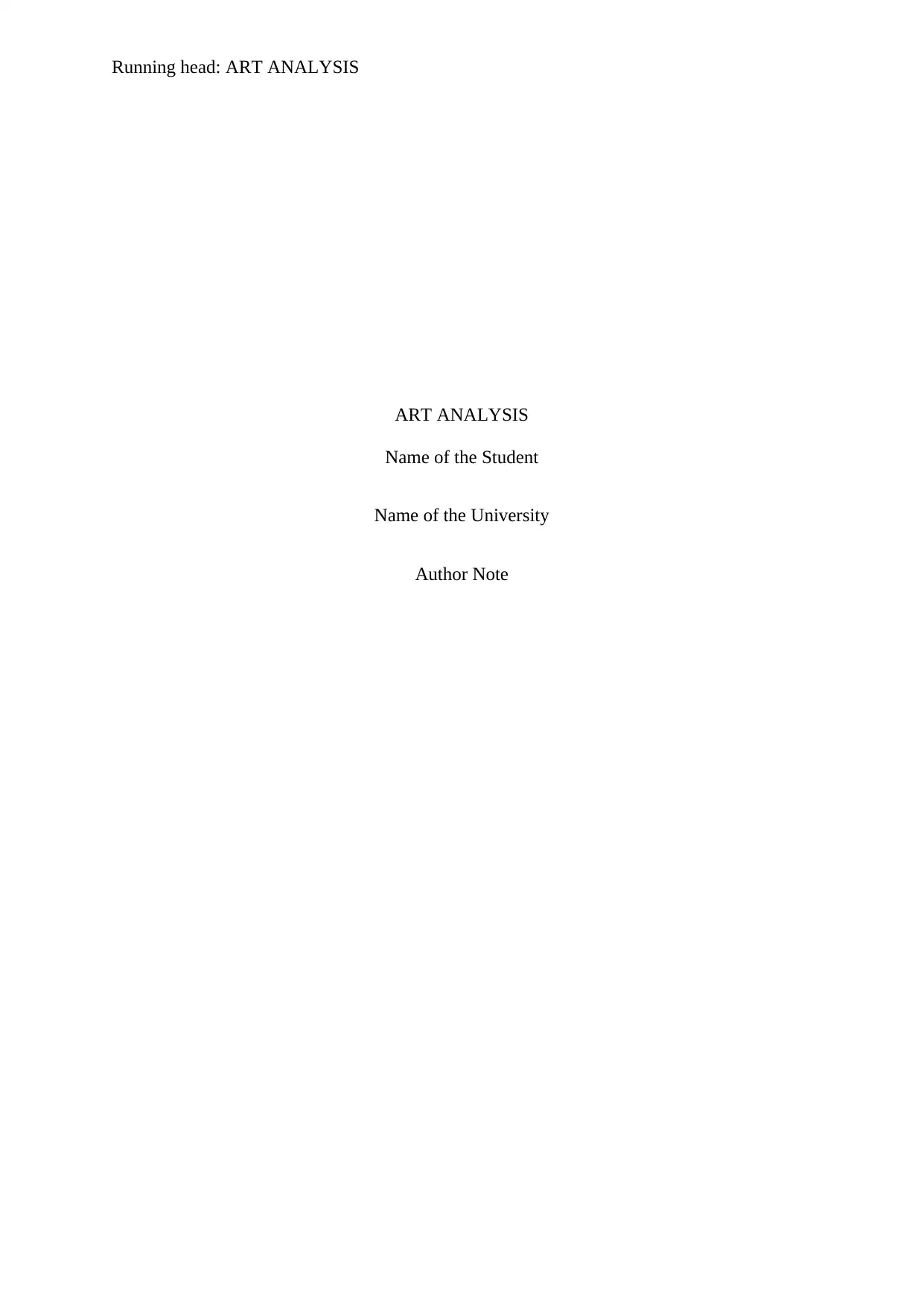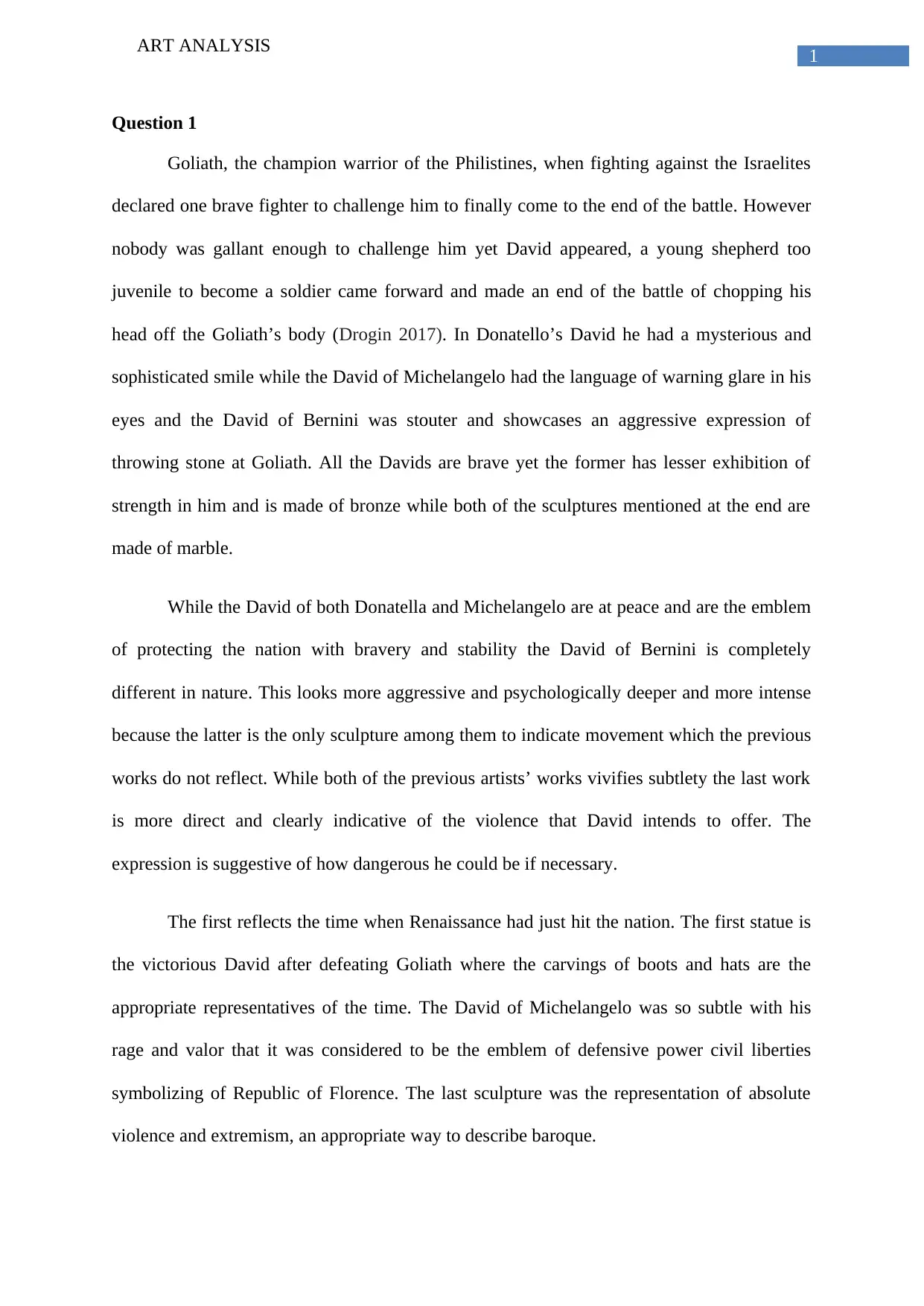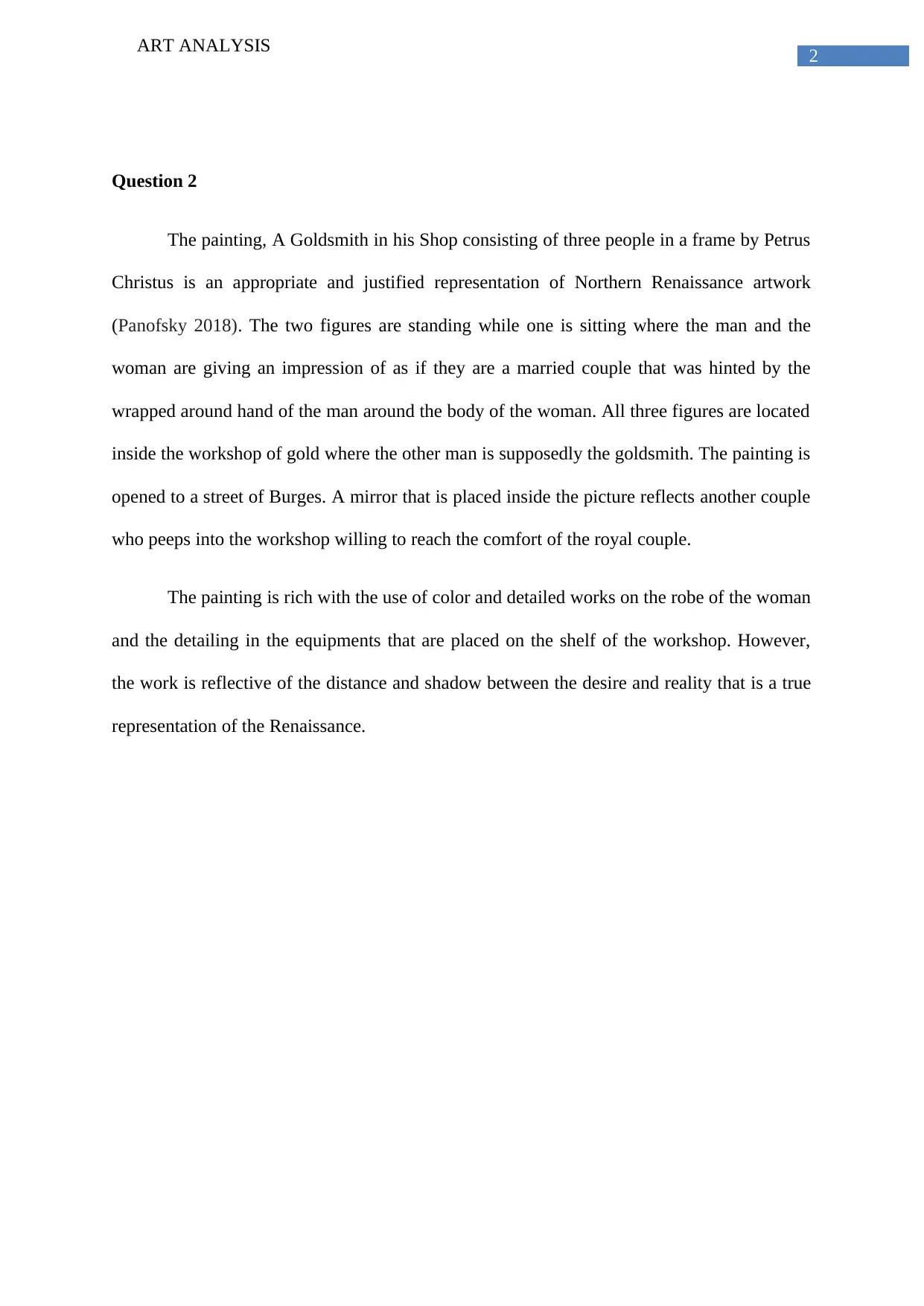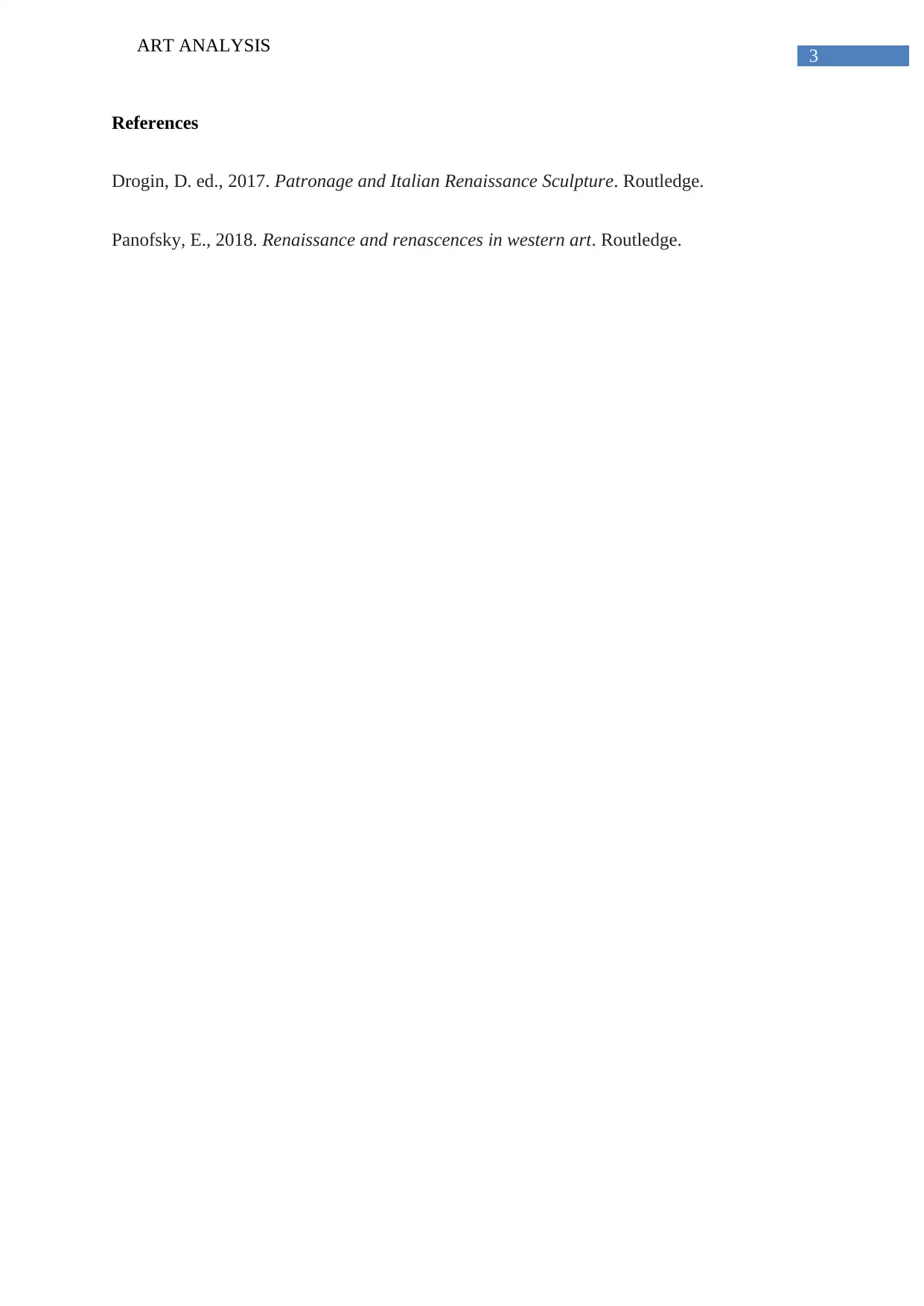Art Analysis: Comparing Renaissance and Baroque Art Forms
VerifiedAdded on 2022/08/12
|4
|594
|17
Report
AI Summary
This report provides an analysis of artworks from the Renaissance and Baroque periods. It begins by comparing three depictions of David: Donatello's, Michelangelo's, and Bernini's, highlighting the evolution of artistic styles and expressions of power. The analysis focuses on how each artist portrays David's character and the overall impact of their works. The report then examines Petrus Christus's painting "A Goldsmith in his Shop," discussing its representation of the Northern Renaissance, use of color, and symbolic elements. The analysis considers the painting's portrayal of the relationship between desire and reality, offering insights into the social and cultural context of the artwork. This report serves as a comparative study of art movements, providing a detailed overview of the selected artworks and their significance within art history.
1 out of 4






![[object Object]](/_next/static/media/star-bottom.7253800d.svg)